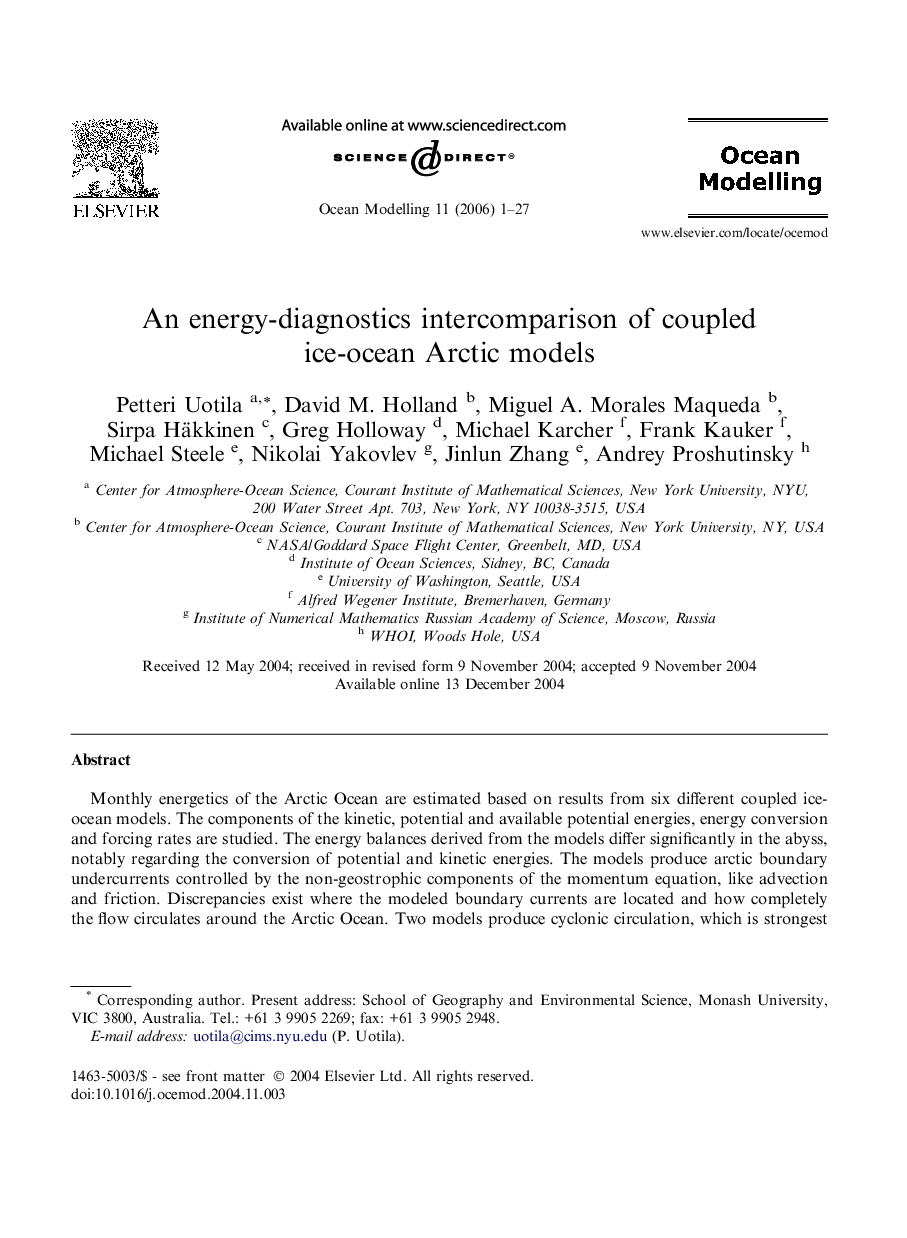| Article ID | Journal | Published Year | Pages | File Type |
|---|---|---|---|---|
| 4552897 | Ocean Modelling | 2006 | 27 Pages |
Monthly energetics of the Arctic Ocean are estimated based on results from six different coupled ice-ocean models. The components of the kinetic, potential and available potential energies, energy conversion and forcing rates are studied. The energy balances derived from the models differ significantly in the abyss, notably regarding the conversion of potential and kinetic energies. The models produce arctic boundary undercurrents controlled by the non-geostrophic components of the momentum equation, like advection and friction. Discrepancies exist where the modeled boundary currents are located and how completely the flow circulates around the Arctic Ocean. Two models produce cyclonic circulation, which is strongest at the depths of 300–800 m. The initial stratification, based on observations, contains a marked gradient of the available potential energy between the Eurasian and Canadian Basins with two corresponding circulation cells. The stratification is modified by the modeled circulation systematically so that this gradient vanishes. The models aim to produce a closer match toward the expected circulation, but result in a deviation from the observed, initial stratification.
